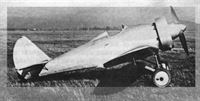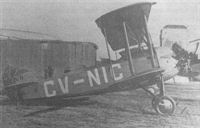Фотографии
-
Регистрационный номер: NX8575 ‘Buchon’ C4K-144 became G-AWHP for the film ‘Battle of Britain’ and then moved to the USA where it was operated by the Confederate Air Force as NX8575 until suffering an accident in December 1987.
Самолёты на фотографии: Hispano HA-1109/HA-1112 Buchon - Испания - 1945
-
An anonymous ‘Battle of Britain’ HA-1112M-1L at Jersey Airport, 1968.
Самолёты на фотографии: Hispano HA-1109/HA-1112 Buchon - Испания - 1945
-
Регистрационный номер: D7000, G-EBIA [3] Shuttleworth’s G-EBIA in the 40 Squadron markings worn following restoration at Farnborough, from 1959 to 1972.
Самолёты на фотографии: RAF S.E.5 - Великобритания - 1916
-
Регистрационный номер: G-ADSW, G-EBIA [3] Another view of G-EBIA during the skeletal existence with Armstrong Whitworth. Ensign I G-ADSW ‘Eddystone’ provides scale,
Самолёты на фотографии: Armstrong Whitworth Ensign / A.W.27 - Великобритания - 1938RAF S.E.5 - Великобритания - 1916
-
Регистрационный номер: F904, G-ADEV, G-EBIA [3], H1599 Today, G-EBIA flies as F904. It is seen here on the flight line at Duxford, along with the Shuttle worth Collection’s Avro 504K ‘H1599’ (G-ADEV).
Самолёты на фотографии: Avro Avro 504 - Великобритания - 1913RAF S.E.5 - Великобритания - 1916
-
The first two Romanian-designed prototypes, the ASTRA-Sesefski (left) and the Proto-1, pictured during their evaluation period, 1923. Note the Romanian tricolour painted obliquely on the fin and rudder of the Sesefski. Both aircraft sport the FARR’s red-yellow-blue roundels.
Самолёты на фотографии: Arsenalul Aeronautic Proto-1 / Proto-2 - Румыния - 1922Astra Astra-Sesefski - Румыния - 1923
-
The IAR-16 was the last in the line of early IAR fighter prototypes. It was the design of Elie Carafoli featuring an all-metal airframe, covered by a mixture of plywood, fabric and dural sheets. On July 16, 1935 ‘Locotenent Aviator’ Alexandru Papana established a new national record for altitude in this aircraft.
The I.A.R.16 brought indigenous Romanian fighter design to an end for more than a dozen years. The first Romanian fighter with an all-metal structure, it failed to progress further than prototype stage.Самолёты на фотографии: IAR IAR-15 / IAR-16 - Румыния - 1933
-
SET-31 No 17 was one of the last survivors. The wingless airframe was used for parachute experiments in the summer of 1941. The yellow ring, denoting an ‘Axis’ aircraft has been painted on the fuselage, but the new FARR markings, the so-called ‘Michael cross’ has not been applied. This came into effect from May 1941.
Самолёты на фотографии: SET SET 3 / 31 / 4 / 41 - Румыния - 1928
-
Регистрационный номер: CV-NIC SET-31 No 11, was the first SET aircraft to receive a civilian registration. CV-NIC’s owner, Prince Nicolae, made several long range flights in it. On August 18, 1931, new regulations came in changing the Romanian registration prefix and the aircraft was reregistered YR-ABA. It was later transferred to the FARR’s fighter fleet.
Самолёты на фотографии: SET SET 3 / 31 / 4 / 41 - Румыния - 1928
-
The unconventional ‘Aeron’ was the last aircraft to be built at ‘Arsenalul Aeronauticii’ in Bucharest, 1935. Test flown by Frenchman Lepruex, who was satisfied with its flying characteristics.
Самолёты на фотографии: Arsenalul Aeronautic Aeron - Румыния - 1934
Статьи
- Round-Out
- A.Pelletier - Towards the ideal aircraft? (1)
- A.Robertson - In from the Cold. Avro 504L Seaplane G-EASD
- C.Ashworth, P.Green - Bournemouth Bases
- D.MacCarron - Bandits on the Border! The Aerial Campaign Against 'Pancho' Villa
- F.Prins - Foolhardy Patriot? Flugkapitan Hanna Reitsch
- J.Grant - From Three to Two. Australian use of the Do 24 and PBM-3
- J.Lyzun - Twenty Faithful Years. The B-25 in RCAF Service
- J.Smith - Mau Mau! A Case Study in Colonial Air Power
- M.Axworthy - Flank Guard. Romania's Aerial Advance on Stalingrad (1)
- M.Passingham - Overtaken by Events. The Potez 39 Family
- N.Williams - On Civvie Street. Douglas C-74 Globemaster Civil Operations
- W.Jesse, B.Engbrecht - Not Quite Ten. Northrop's A-9, A-X runner-up









